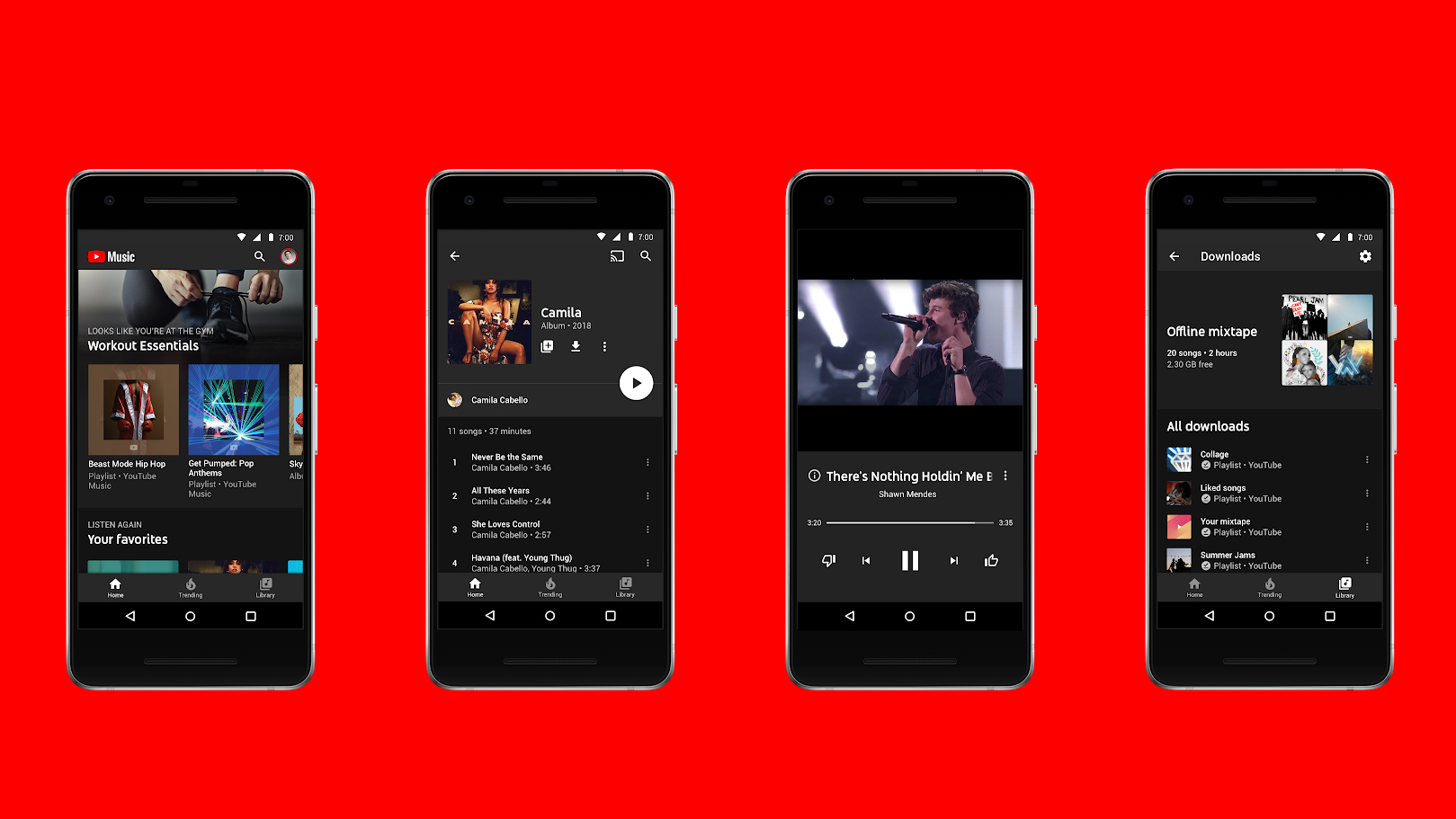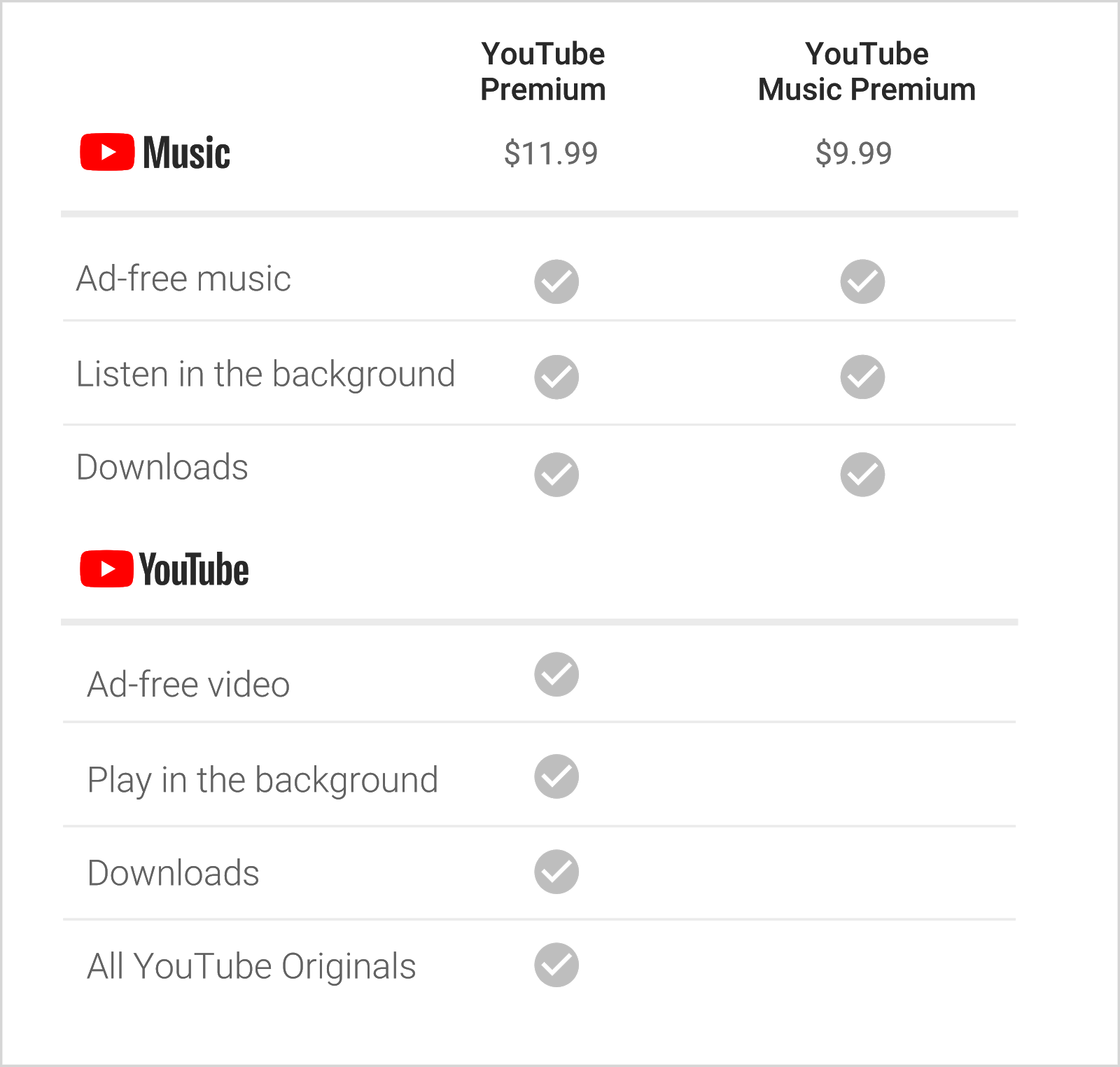YouTube Music: 5 things you need to know before signing up
YouTube is changing today with the rollout of both YouTube Music and YouTube Premium, a pair of services that could alter the way that you consume content from the video giant.
If you spend a lot of time on YouTube - especially if that time is spent watching music videos, listening to singles and playlists, or seeking out covers and remixes - then you'll want to take note of YouTube Music.
Why? It essentially rolls up everything great about YouTube's vast, diverse library of music-related content and bundles that with a proper, Spotify-like music service, including millions of tracks and personalized recommendations.
Sounds great, right? It might be, but we haven't used it yet.
YouTube is gradually rolling out access in the United States, Mexico, Australia, New Zealand, and South Korea starting today, with additional countries (including the United Kingdom and Canada) on the near horizon.
Still, we've heard plenty about the incoming service, so here are five key things you need to know before signing up for YouTube Music.
1) It's a full-fledged streaming service
It's rarely hard to find the tunes you're looking for on YouTube, whether they've been put there legally or otherwise, but YouTube Music is something different: it's a music-focused streaming service that seems designed to wage war against the likes of Spotify and Apple Music.
Google calls YouTube Music "a new music streaming service" that promises official renditions of millions of songs and albums. In other words, it doesn't sound like they're just slapping a label and a price tag on the existing YouTube content you know and love - it'll be that stuff along with the usual amenities of a streaming music service.
Of course, video remains YouTube's specialty, and there's nowhere better for finding official music videos from artists. That'll continue to be the case with YouTube Music, and a redesigned mobile and desktop app will serve up music videos, tunes, and plenty more with ease. We have to assume that web access is also included … it is still YouTube, after all.

2) But it has some unique quirks, too
YouTube might be gunning for the Spotify throne with YouTube Music, but they're also trying to lean into what makes YouTube such a compelling place for music lovers. Yes, it'll include the same kinds of albums and tracks found on other services, but it sounds like YouTube won't forget about all of the other content around it.
That means that things like cover songs, parodies, and live performances will remain accessible alongside the official tracks and videos, making YouTube Music an ideal service for immersing yourself in an artist's catalog - and everything else linked to it.
The service will also feature thousands of curated playlists and a recommendation engine that's built around your tastes, along with where you are and what you're up to. Google mentions gym and commute playlists as examples there, or that it can suggest relaxing pre-flight tunes if you're at an airport.
One of the more compelling features is a super-smart, surely A.I.-driven search engine that goes beyond simply searching for song titles and artists. Yes, it can help find songs based on lyrics, but it can also try finding tracks based on misheard lyrics - for example, that oft-misunderstood line in Taylor Swift's "Blank Space" that sounds hilariously like "Starbucks lovers."
Another example they've pointed out is "that rap song with flute" (Future's "Mask Off") and "that hipster song with the whistling" (Peter Bjorn and John's "Young Folks"). If it really works as well as they suggest, then it could be a huge help for locating tracks that you don't know much about.

3) It has free and paid experiences
Apple Music might be all-in on premium subscriptions, but YouTube Music will instead offer a Spotify-like model, letting users choose between free and paid versions of the service. According to the official blog post, the free version of YouTube Music will be ad-supported, of course, and it will require an Internet connection. Beyond that, any restrictions on playback haven't yet been detailed.
YouTube Music Premium, on the other hand, will provide some very beneficial features that might be worth springing for. First and foremost, it cuts the audio advertisements—so you won't have to worry about awkward commercials after every few songs, but it's unclear whether music videos will lack ads. YouTube's chart suggests otherwise, although it'll feel strange to see any ads within the YouTube Music app if you're paying for the service.
The paid service will also provide background listening on mobile, so you can switch away from the app and multitask, plus you'll be able to download songs for offline listening. YouTube Music also has a cool feature called "Offline Mixtape," which "automatically downloads songs you love" so you have them handy if you really want them. That's a considerate perk!
YouTube Music Premium is priced at $9.99 per month in the United States, which is the same price as Spotify, Apple Music, and Google Play Music. We don't have international pricing just yet, but we have to imagine that Google will aim to stay comparable with the competition everywhere.

4) YouTube Premium costs extra
While this might seem confusing at a glance, YouTube Music Premium is not the same as YouTube Premium. That said, YouTube Premium encompasses everything that's in YouTube Music Premium, but then adds more content. And it costs more.
... Like we said, it's confusing.
YouTube Premium is essentially the rebooted version of YouTube Red, the previous paid version of the site that never seemed to catch on in a big way. Like YouTube Red, YouTube Premium offers access to original series and movies, which the company is ramping up on. Furthermore, it lets you watch YouTube videos without ads, play videos in the background on mobile so you can still hear what's happening, and download videos for offline playback.
And then it adds YouTube Music Premium's full functionality on top of that. As a result, YouTube Premium will cost $11.99 per month - that's $2 more than YouTube Music Premium, and $2 more than YouTube Red was.
Luckily, if you were already a YouTube Red subscriber, they'll let you keep your existing price point. No word on when that will change.

5) It's not replacing Google Play Music
Did you read all of this and think, "Wait, doesn't Google already have a streaming music service?" If so, then you'd be correct: it's called Google Play Music and it's still around today. For some reason, it'll still be around in the future too. Google clarified that YouTube Music is not meant to replace Google Play Music, as they'll apparently coexist. Google Play Music users will gain access to YouTube Music Premium as well.
"To the Google Play Music users out there, nothing will change - you'll still be able to access and add to all of your purchased music, uploads and playlists in Google Play Music just like always," reads a blog post from YouTube Music product manager Elias Roman.
Why keep Google Play Music around if YouTube Music Premium does the same things and more? That's unclear. Maybe it's just to gradually ease subscribers over to the new app and experience without annoying anyone with sudden shifts.
In any case, it looks like Google plans to keep its current service around for the time being, and we'll just have to wait and see whether or not that approach holds up long-term.
Contributer : Techradar - All the latest technology news https://ift.tt/2s3Cpm4

 Reviewed by mimisabreena
on
Wednesday, May 23, 2018
Rating:
Reviewed by mimisabreena
on
Wednesday, May 23, 2018
Rating:















No comments:
Post a Comment